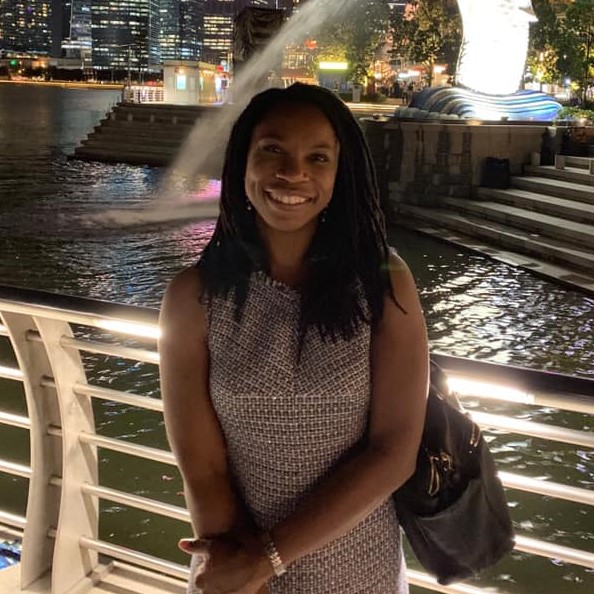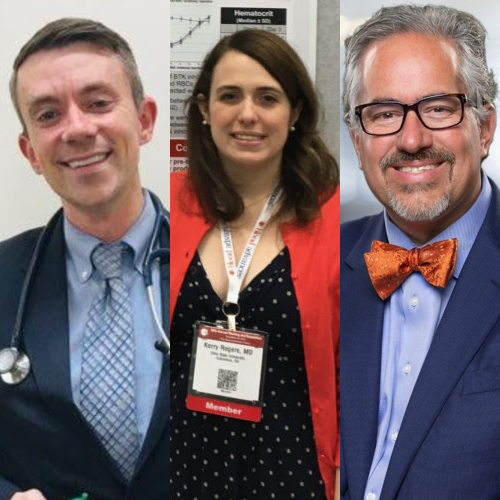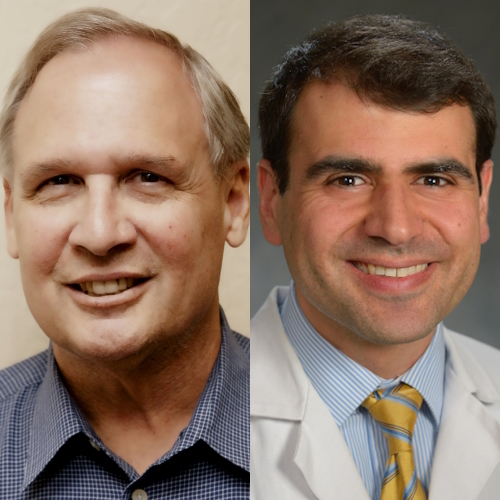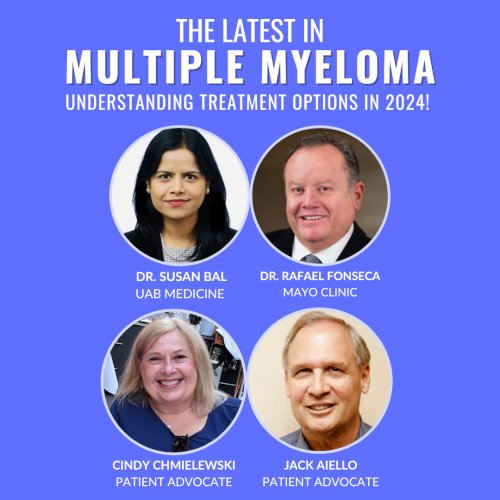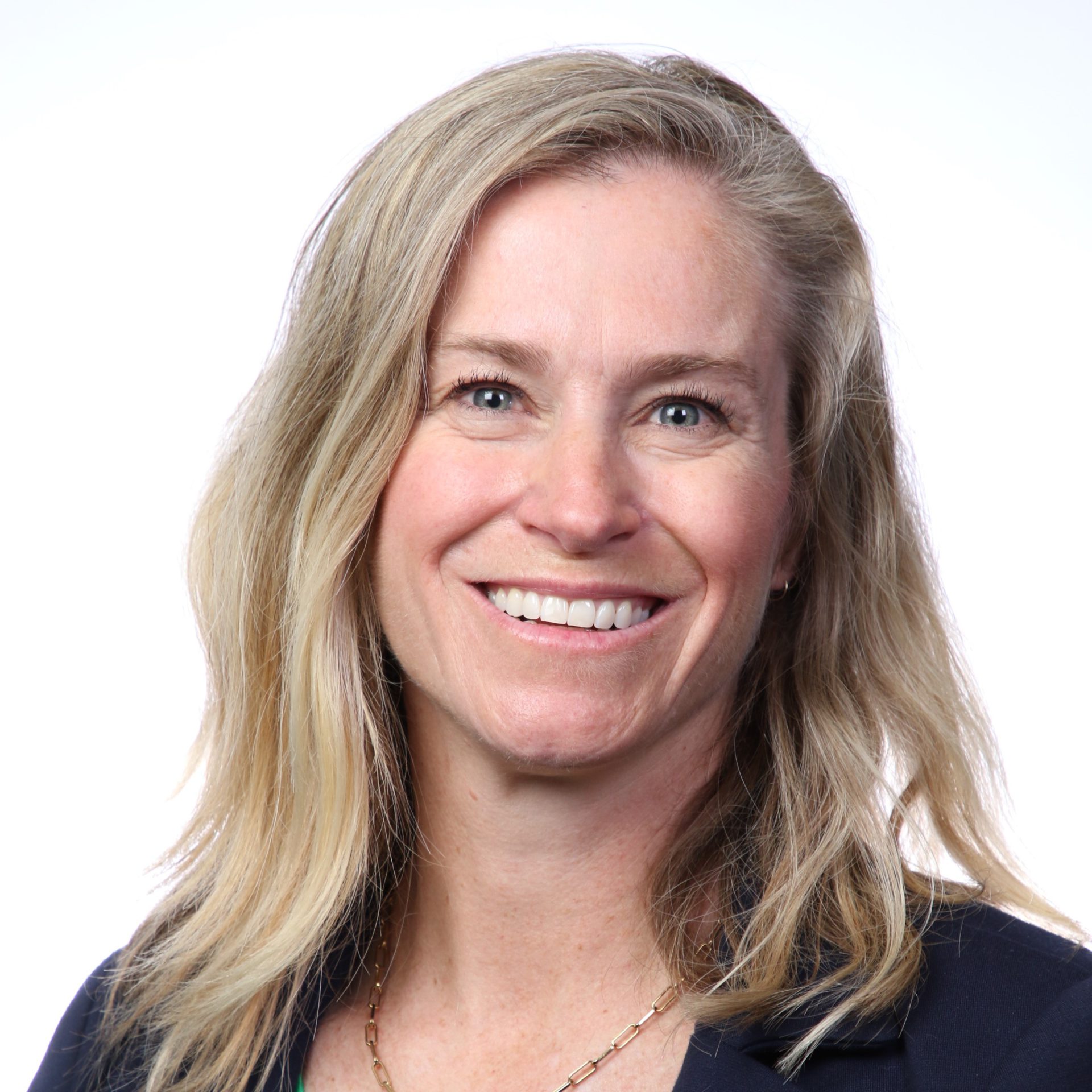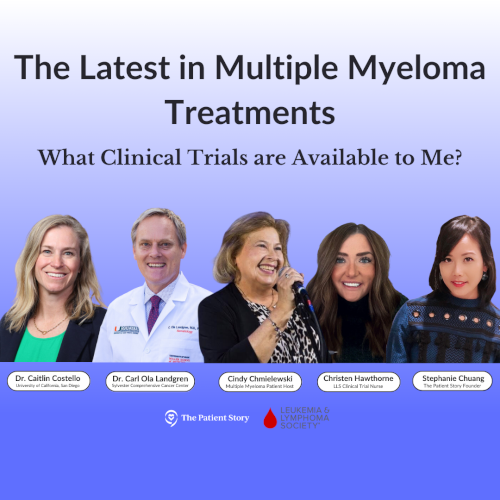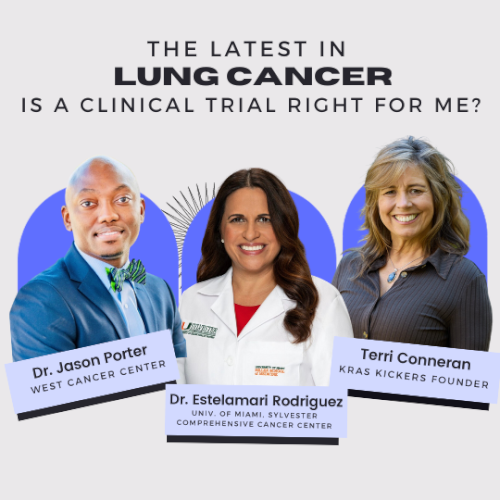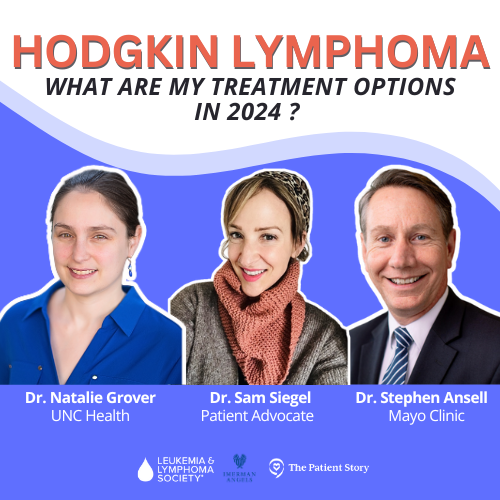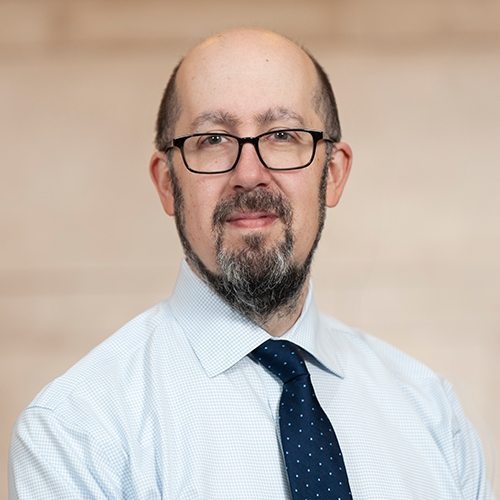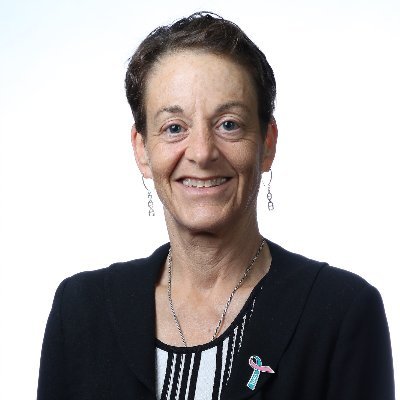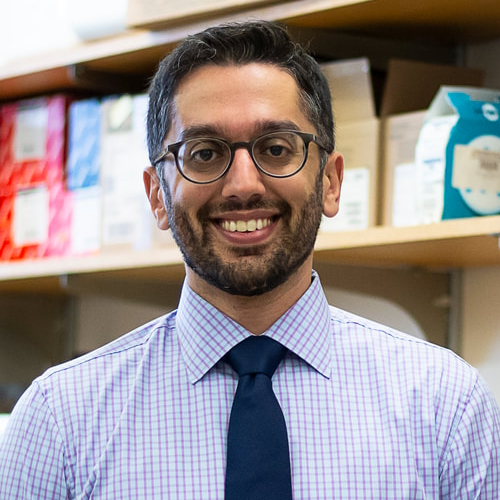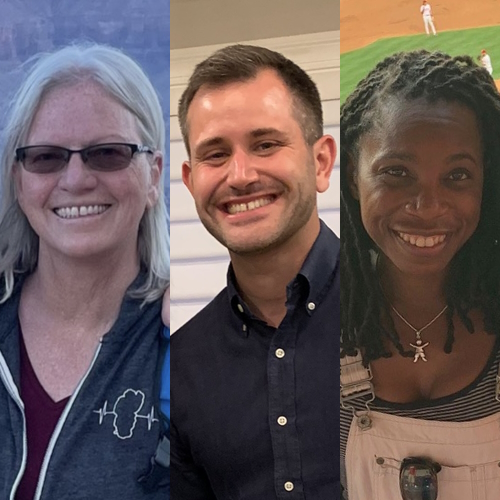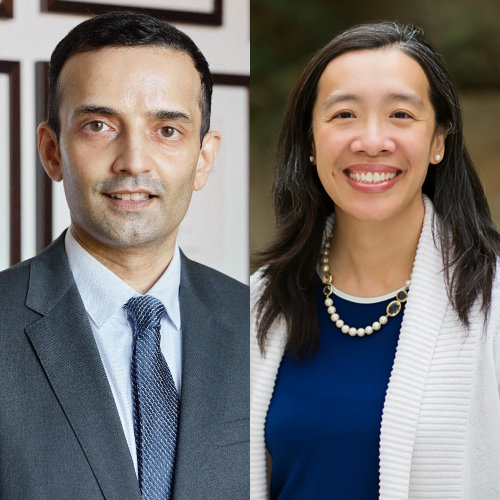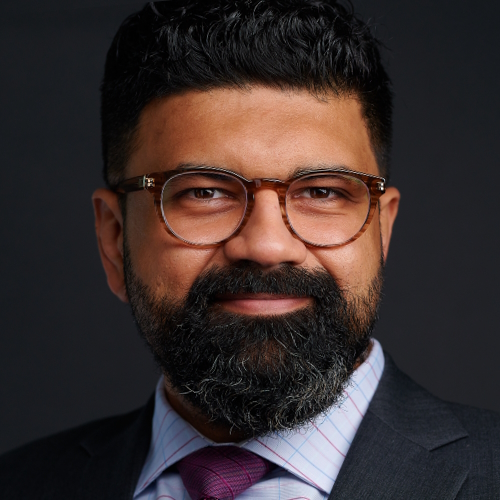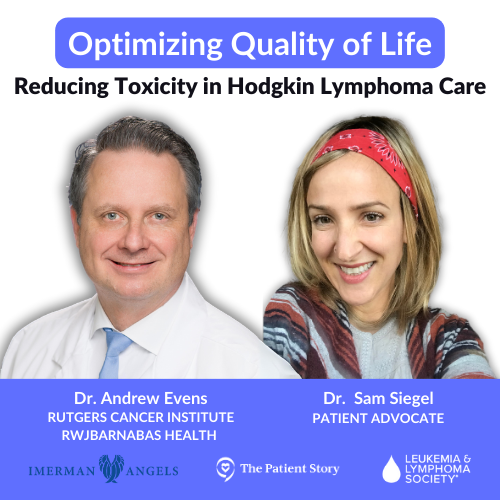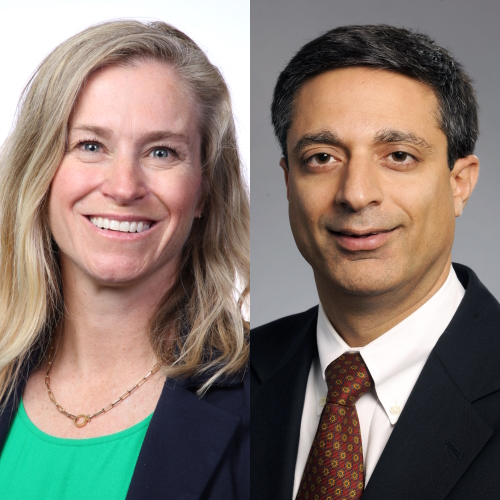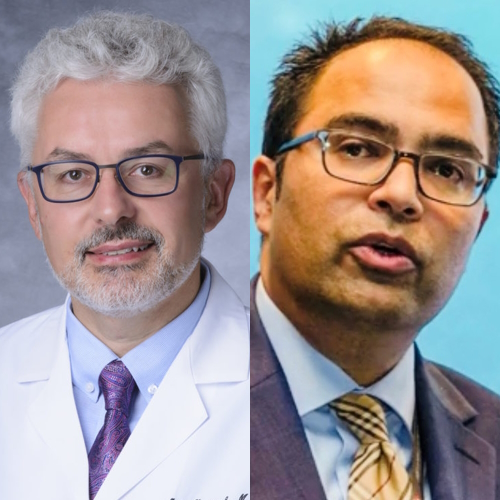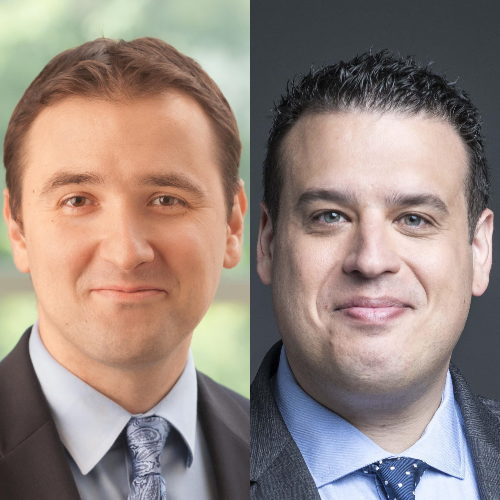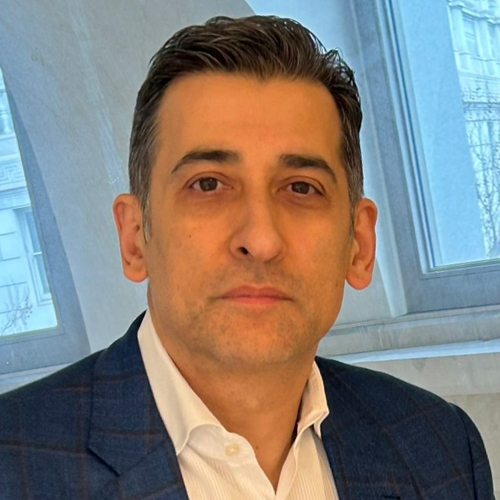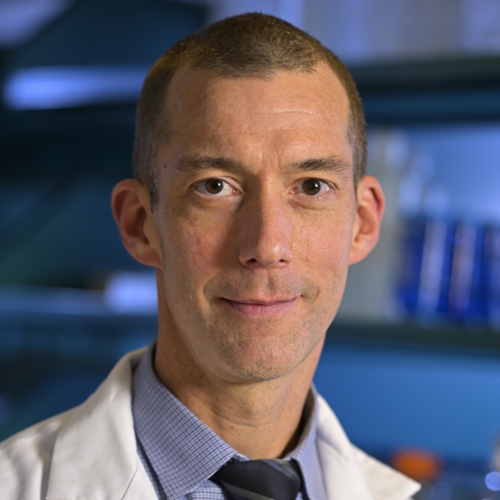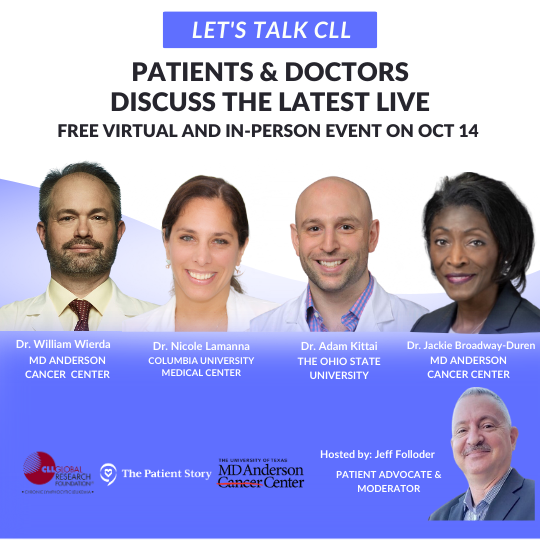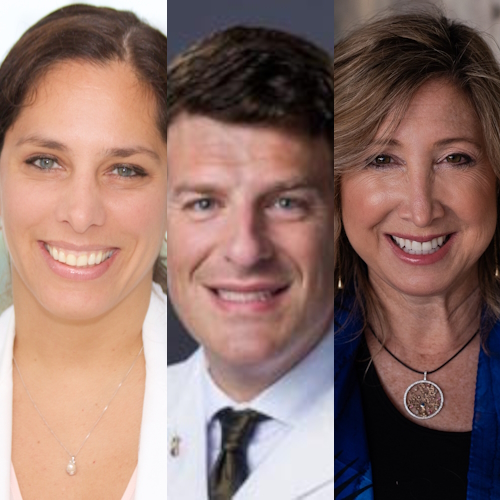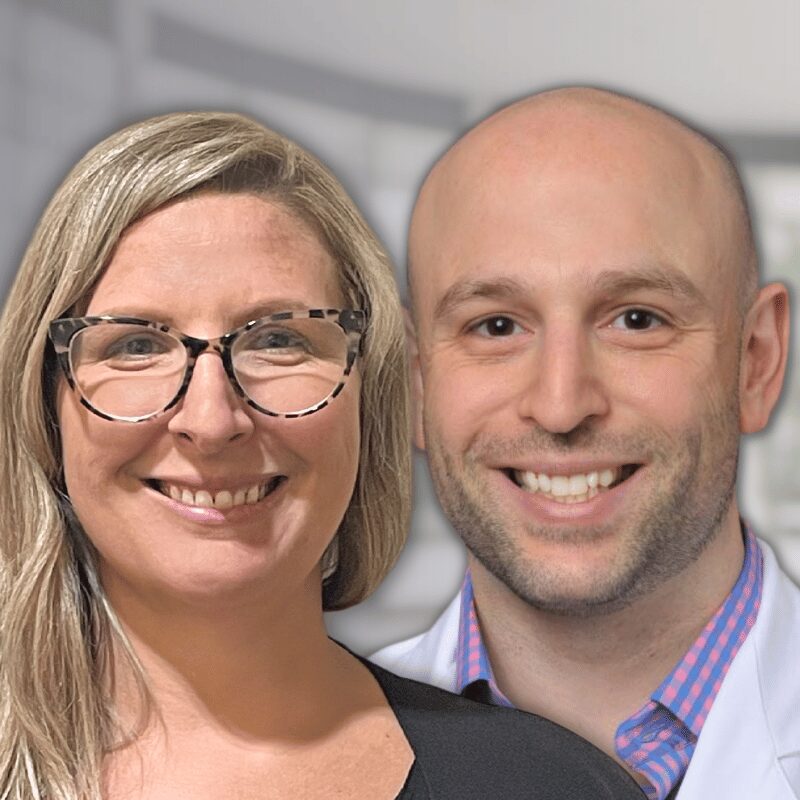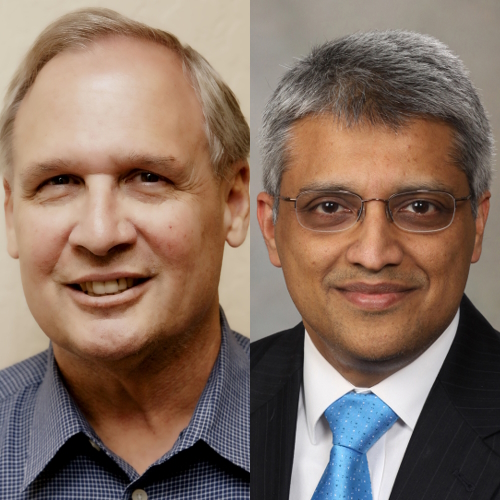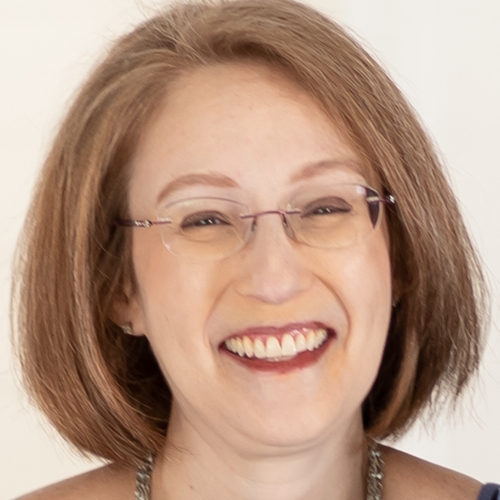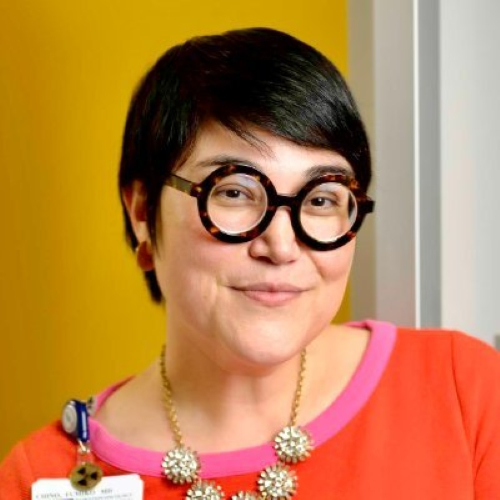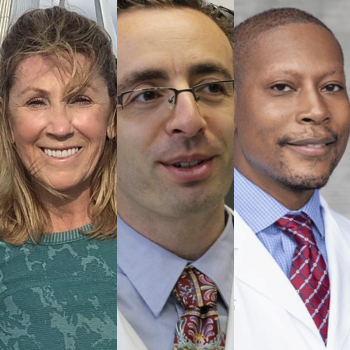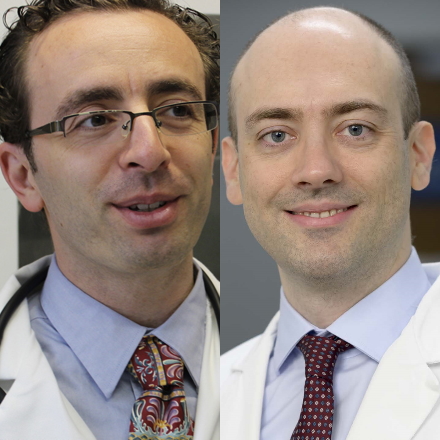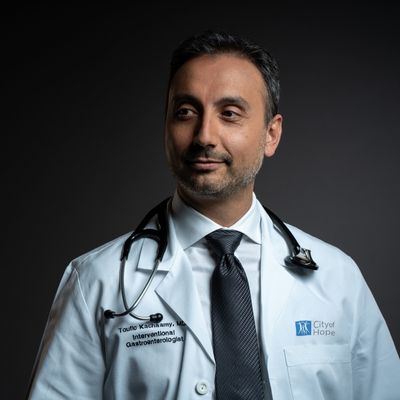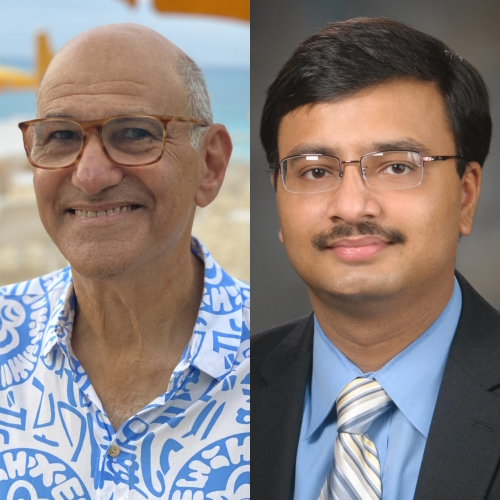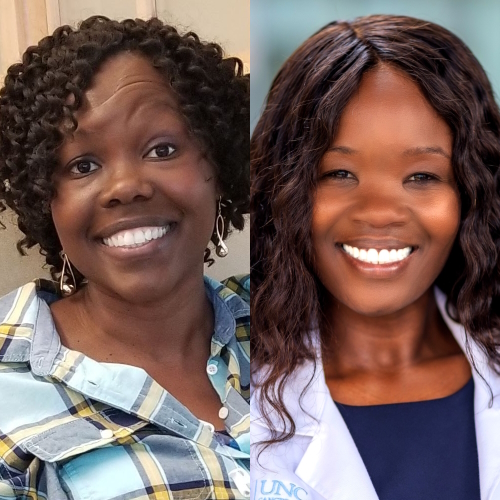The Latest in Breast Cancer with Dr. Lola Fayanju
The Latest in Breast Cancer with Dr. Lola Fayanju at San Antonio Breast Cancer Symposium (SABCS) 2022
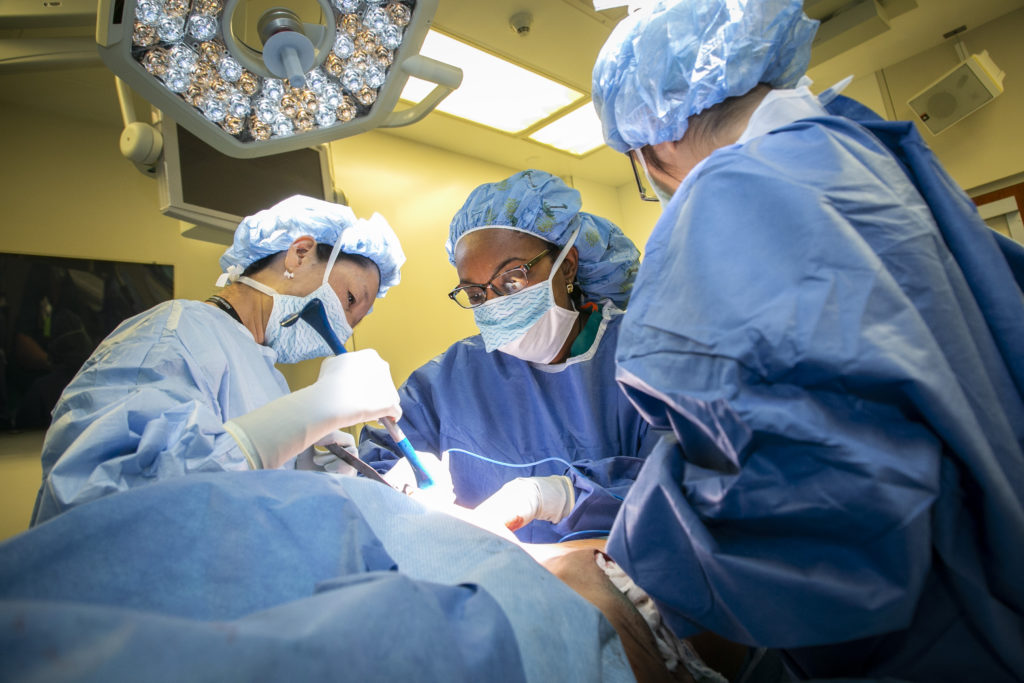
The San Antonio Breast Cancer Symposium (SABCS) provides the latest information in research, prevention, diagnosis, and treatment of breast cancer.
Dr. Oluwadamilola “Lola” Fayanju is the Helen O. Dickens Presidential Associate Professor in the Perelman School of Medicine at the University of Pennsylvania, the Chief of Breast Surgery for the University of Pennsylvania Health System, the Surgical Director of the Rena Rowan Breast Center in the Abramson Cancer Center, and an innovation faculty member at the Penn Center for Cancer Care Innovation (PC3I).
Dr. Fayanju’s focus as an academic breast surgical oncologist is on health disparities, patient-reported outcomes (PROs), and aggressive breast cancer variants.
Dr. Fayanju sat down with The Patient Story to discuss some of the latest news coming out of SABCS 2022.
discusses breast cancer, PROs, the language used around racial health disparities, and the importance of conferences like SABCS.
- Introduction to Dr. Fayanju
- How did you feel meeting that patient who had delayed care?
- The importance of SABCS and other conferences
- HER2-low breast cancer
- What are the new emerging treatments for breast cancer?
- Worse outcomes reported for people of color
- Language around racial disparities in healthcare
- Why is there a lack of diversity in clinical trials?
- Patient-reported outcomes
- Looking forward to future research on breast cancer
This interview has been edited for clarity. This is not medical advice. Please consult with your healthcare provider for treatment decisions.
Introduction to Dr. Fayanju
Dr. Fayanju: I’ve always been interested in women’s health. [I was] one of those kids who always wanted to be a doctor and actually was really leaning towards OB-GYN. [I] was always interested in women’s reproductive rights.
Then when you go to medical school, you find out which parts of the body kind of attract you more. I have to admit, I was actually really attracted to surgical disease, found myself really gravitating towards surgical disease, and really got interested in general surgery.
As often happens, you are drawn into things because of the patients who move you and the mentors who inspire you. I was really moved by a patient who was a lot like me when I was a third-year medical student. She was about my age. She was actually also Nigerian.
She was presenting with a large triple-negative breast cancer, and she was alone. She had no family in the United States. I actually remember her starting to cry as I was examining her. I was seeing her in a safety net clinic. That is a clinic that was staffed primarily by trainees overseen by altruistic attendings at my medical school, who then connected those patients to tertiary care.
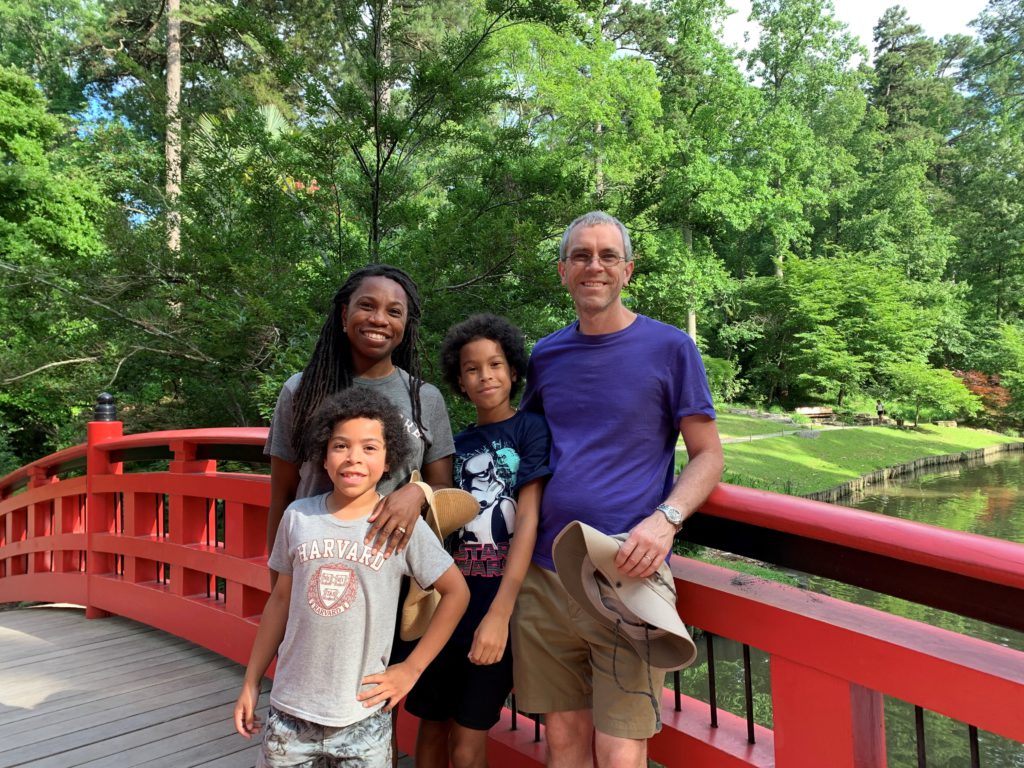
[I had] a wonderful couple of mentors, including Julie Margenthaler, who is the Chief of Breast Surgery at Washington University, and Ira Kodner, who was a colorectal surgeon but became very famous in the world of medical ethics, as well as care for the underserved.
Working with them, [I came] to realize that patients who presented through the safety net clinics were more likely to present with delayed care and more likely to present with a more advanced stage. That really launched, I would say, my career as a health services researcher and as someone interested in care that really reflected disparities in our society and our ability to provide equitable care.
I became interested in surgery because of the disease, I became interested in breast cancer because of the patients, [and] I also became inspired by having great mentors.
It all seems very linear, finding myself here now as a breast surgeon, but it was actually multifactorial and looks more clean and neat than it felt in the moment. But here I am today with the privilege of being a breast surgeon.
Read More: Breast Cancer Patient Stories
How did you feel meeting that patient who had delayed care?
I felt anger. I felt frustration. I felt the beginnings of despair, but then held myself back, thinking, “How could I make a difference?” Her experience and my experience working with the safety net clinic there actually led to a research project.
What was exciting about that [research project] is that it actually led to a change in the way that care was provided in St. Louis. It used to be the case that patients who were seen in one of the clinics that were treating patients who had no healthcare or who are underinsured — those patients often had to go back to their primary care providers to get referred to the tertiary clinic to get cancer care.
In fact, through research that we conducted, we were able to demonstrate that this led to delays because of having to redo imaging [and] because of missed appointments. It led to a change through the St. Louis Health Commission in the way that care is provided for these patients.
For me, it was a way to show that research didn’t have to be something that was localized to the ivory tower. It could actually be impactful. It could actually translate into policy and into real-world effectiveness. That was really exciting for me.

The importance of SABCS and other conferences
The importance of conferences like San Antonio, ASCO, ACR, or Society of Surgical Oncology is that we who are engaged in the scientific process take what we learn and implement it in our everyday care.
The tragedy of it is that often it takes too long. We know that the average amount of time it takes for our innovation to be implemented in routine clinical care is about 9 years.
One of the things that are really exciting [is] the field of implementation science, which at my institution, Penn Medicine’s Abramson Cancer Center, we actually have a funded implementation science center, which I’m a part [of].
That works to bridge the disconnect between discovery and delivery to ensure that what is found, what is discovered, and what is innovated by scientists actually makes it to patients.
What I would say is important about San Antonio is one, announcing new medications, devices, or approaches to care that will make a difference in the lives of patients with breast cancer. Two, updates on trials that were announced in the past that we now know more about. Then, three, ways in which we can take knowledge that has been kind of assumed to be standard and how we can actually apply that and update that in regular practice.
[Here are] examples of each of those 3 things. One, we are increasingly weighing the results of trials that will tell us how best to manage HER2-low disease. That is patients who have some HER2 expression, but where they don’t rise [to] the level of expression that we used to think was needed to benefit from targeted therapy.
An example of the middle one is the reporting of our understanding of Oncotype DX as both a prognostic and predictive tool for helping us better treat patients with estrogen-receptor-positive disease.
Then a third example is a talk that I’m giving today as part of a panel on patient-reported outcomes. [PROs] are opportunities for patients to describe how they’re feeling, what symptoms they’re experiencing, [and] what psychosocial challenges they might have that might prevent them from optimizing their breast cancer journey.
Those are 3 ways in which conferences like this allow us to communicate new findings, update knowledge we already have, and translate information and approaches we have into the clinical realm for the benefit of patients. Those are some examples of why San Antonio is important.
HER2-low breast cancer
The way to think about it is we’re looking for more opportunities for treatments. I think of HER2 targeted therapy as really an ideal within oncology because it really has changed our ability to achieve pathologic complete response — that is, eradication of tumor prior to surgery just through the use of systemic therapy.
It really has represented a gold standard that we’re trying to achieve for other types of molecular subtypes. Really, [what] we’re trying to figure out more and more is which types of HER2-low can be treated with systemic therapy. In whom can we deescalate other types of treatment? We know that some of the targeted therapy is very hard on the body, and so that’s something that we’re hoping to learn more about.
What are the new emerging treatments for breast cancer?
One of the big trials that came out several years ago was TAILORx, which allowed us to understand how well Oncotype DX, which is a genomic test that allows us to understand whether or not women with estrogen-receptor-positive breast cancer would benefit from chemotherapy in addition to endocrine therapy in the adjuvant — that is, post-operative setting.
Yesterday, an update on that was provided. It was very important in that it showed that women who had low or intermediate-risk Oncotype scores did not benefit substantially from additional chemotherapy beyond just getting endocrine therapy, except for women who were 50 years or younger. If they had an intermediate risk score, those individuals had some potential benefit from getting chemotherapy.
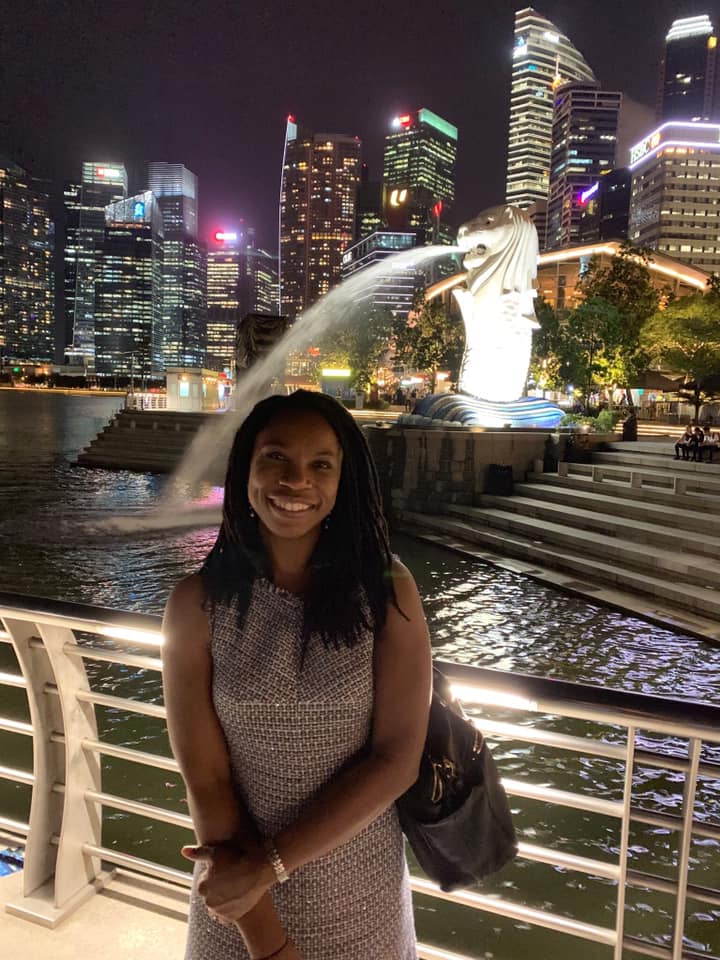
Worse outcomes reported for people of color
What was an unfortunate finding within the study was that Black women had worse outcomes even when you controlled for other factors. The way that was communicated was, I think, in a way that unfortunately is often communicated when trials are described.
Black race was communicated as an adverse factor, which is really not the way in which we want to describe these types of outcomes in minoritized groups. We know that race is a social construct.
As Dr. Lori Peirce, a very prominent radiation oncologist at the University of Michigan and former president of ASCO, described immediately before that presentation, race is a social construct that nonetheless has power and it is notable that in African Americans for many years, there was the one-drop rule in effect.
It was used to justify the enslavement of children of miscegenation in order to keep those children enslaved. It is also used to withhold rights from people of Native American ancestry by having it be that you have to have a certain minimal amount in order to claim Native American ancestry and take advantage of certain rights that are ascribed to them through the U.S. government.
Again, the use of ancestry is often political; it is not biological. When we ascribe risk or we describe disparities that are observed in certain groups, we need to really tease apart when we’re talking about genetic ancestry and when we’re talking about the systemic racism, bias, and the structures that contribute to seeing untoward outcomes in those groups. That, unfortunately, was not really described in the relaying of those results.

Language around racial disparities in healthcare
\We should never use language that Black race is an adverse factor or Hispanic ethnicity is an adverse factor. People’s identity is not an adverse factor, even if we find disparate results in that group.
The way I would describe those results is to say that, unfortunately, we continue to find worse outcomes amongst Black women. This is an important subject of future inquiry that hopefully will be better understood if we deliberately target Black women for enrollment in these trials, as they continue to be under-included and underrepresented in clinical trials.
Why is there a lack of diversity in clinical trials?
Many of the women who choose not to participate in clinical trials, who are African American, it’s not because they can’t afford to do so. It’s that they have a justified mistrust in the system, a system that has not earned the trustworthiness of people of color.
I think that descriptions of trial results matter. Words matter. As clinical trialists [and] as scientists, we need to think about how the words we put out there will influence [the] future behavior of the people we’re trying to attract to science.
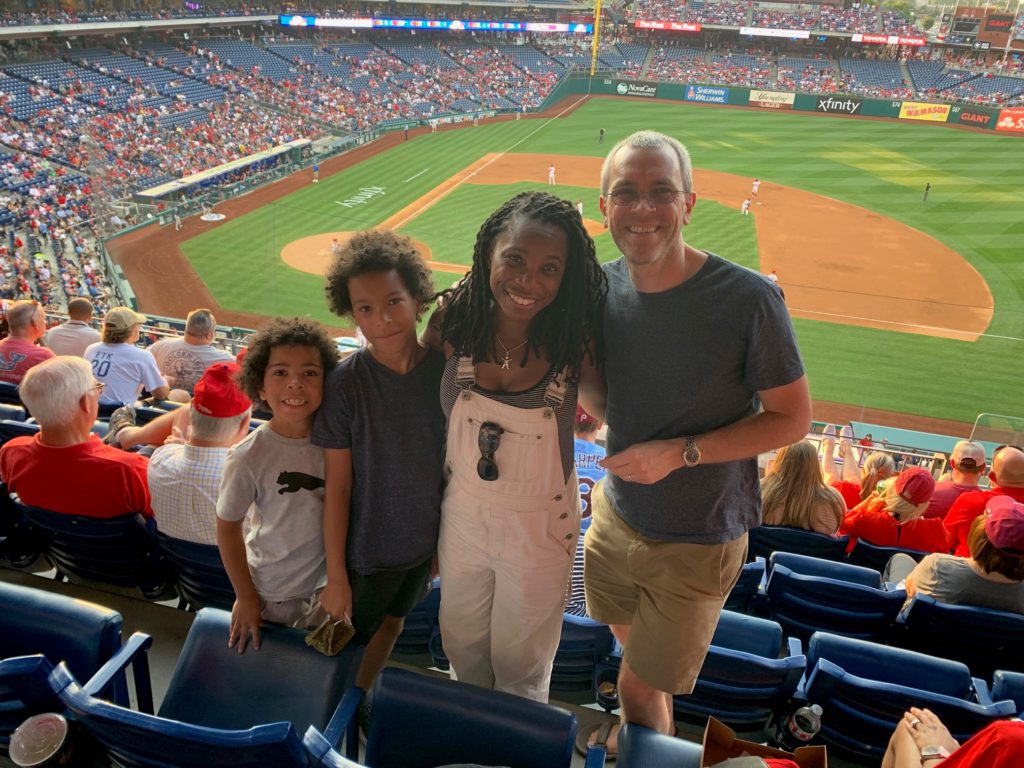
Patient-reported outcomes
Dr. Fayanju: Patient-reported outcomes allow patients to communicate their feelings, sensations, [and] experience without the filter of the physician’s perspective. We know through some landmark work that it may actually improve survival, being able to communicate those experiences directly to their clinicians in a timely fashion.
We also know it is associated with improved shared decision-making, and improved quality of life. In vulnerable populations, it may even allow us to anticipate potential delays in receipt of care and receipt of treatment.
The difficulty is that there’s already a lot of pressure on the patient encounter with regard to what patients are trying to communicate and what doctors are trying to achieve. It’s not that doctors or clinicians as a whole aren’t trying to hear what their patients are trying to say. It’s often you have 15 to 30 minutes to accomplish all of those things.
What I’m hoping to communicate is how best to do that. What are some strategies for collecting that data prior to the patient encounter, during the patient encounter, and potentially afterward? Does it have to be limited to the cancer setting? Are there ways in which we can potentially engage primary care?
Additionally, what are the modalities in which we need to engage patients? How can we it feel less like work? One of the things that we need to think about is how to engage behavioral economics to make it feel easy, both for clinicians and patients. We need to make this not feel like homework, both for patients and for providers.
How can the patient-doctor experience be improved?
We need to be multifaceted. We need to recognize that our patients don’t all engage with patient portals. Many of them have smartphones, but levels of comfort vary. We also don’t want to exacerbate existing disparities by giving some patients a lot of opportunity to communicate with us and other patients the minimal opportunity to communicate with us.
Being able to use both smartphones and simple phones, being able to take advantage of opportunities to communicate in the waiting room, being able to sometimes rely on paper and pencil, and also making sure that we have culturally humble as well as linguistically diverse opportunities for collecting that data are really important.
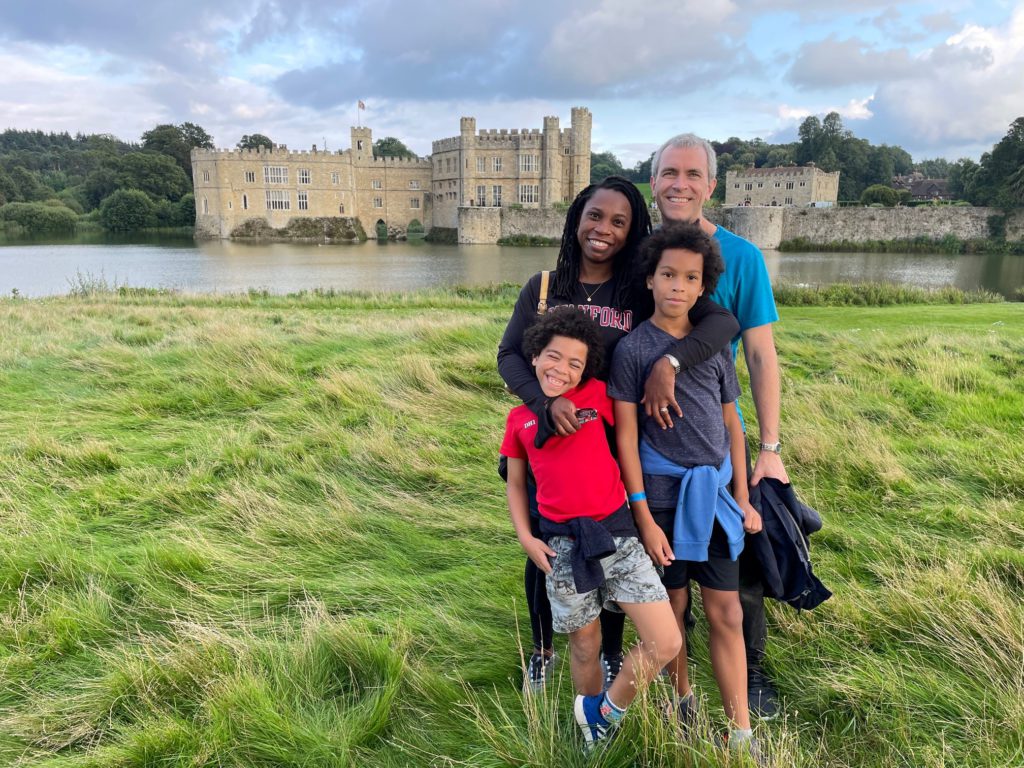
Looking forward to future research on breast cancer
I’m really excited about the idea [of] precision oncology, which right now focuses on the kind of molecular milieu.
I think it also needs to think about the social milieu of the patients. How can precision oncology take into account the specifics of a patient’s social context and tailor their care to their lives, not just the cells in their body and the DNA of their tumor?
With the increased attention, the social determinants of health that COVID-19 really caused all of us to really focus on, I hope that there’s more research. I hope it’s sustained interest in making all of us believe that data that’s important to collect, act upon, and incorporate into our sense of what health should look like and how we can promote cures by incorporating the whole human into our care of the patient.
